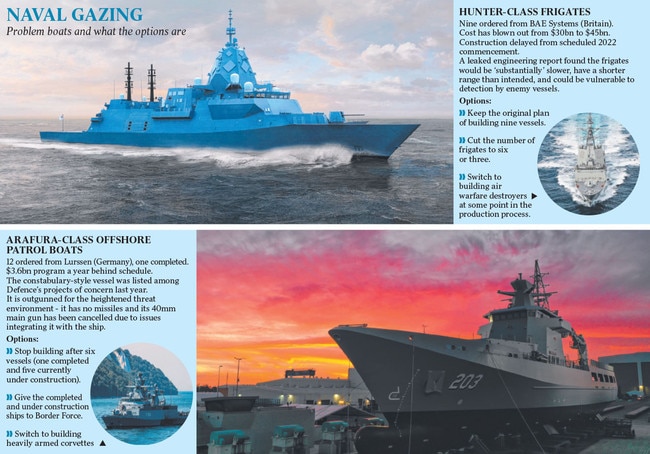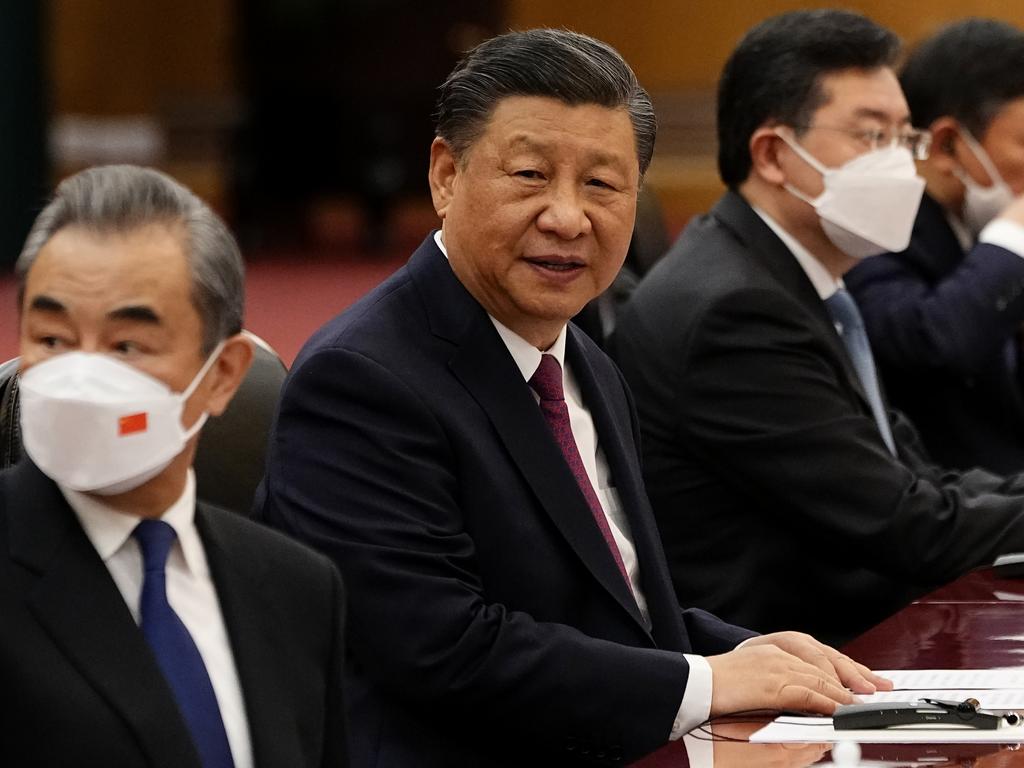Two Australian shipbuild projects worth $50bn - including nine Hunter-class frigates - thrown into doubt after Defence Strategic Review release
The $45bn plan to build all nine Hunter-class frigates has been thrown into doubt just as work is about to begin on the first block of the first warship in Adelaide.

The $45bn plan to build all nine Hunter-class frigates has been thrown into doubt just as work is about to begin on the first block of the first warship in Adelaide.
The project, the largest naval construction in Australia’s history, is not expected to be axed but could be scaled down to six warships or even three as a result of the external review the government has ordered.
The surprise review of the future of the navy’s surface fleet, revealed in the Defence Strategic Review, will force two troubled Australian shipbuilding projects, the frigates project and the $4bn plan to build 12 offshore patrol vessels, to persuade a new panel of experts that they are viable.
The DSR was expected to confirm the size and structure of the navy’s surface fleet, but instead it commissioned another review led by retired US vice-admiral William Hilarides to report by September on the best options for the future fleet.
The DSR called for a surface fleet with “enhanced lethality” and a “larger number of smaller surface vessels (with) enhanced long-range strike and air defence capabilities” but it did not outline what these might be.
The wording of the DSR has led to speculation that the government favours building a fleet of medium-sized, heavily armed corvettes, giving it more surface ships than it would have if the fleet consisted only of large frigates and air warfare destroyers.

Such a move might tempt the government to reduce the size of the Hunter-class project to fewer than the original plan to build nine ships to help fund the corvettes. However, the government has also committed to creating a “continuous shipbuilding capability” in both Adelaide and Perth, which would be impossible if the Hunter project were scrapped entirely.
A spokesperson for the frigate’s builder, BAE Systems Australia, said the company remained “committed to building nine anti-submarine warfare frigates for the Royal Australian Navy”.
They said the project was making strong progress and work was due to commence in two weeks on the first block of the first frigate, due to be completed in 2031.
In August 2021, the navy and BAE Systems agreed to an 18- month delay to the start of the project partly because of the immature design of the parent ship, Britain’s Type-26 frigate, upon which the Hunter-class is modelled.
Designers also struggled with the fact that the Australian boat was heavier than expected after navy-requested modifications were incorporated, including US combat systems and Australian-made radar.
In December last year, Craig Lockhart, managing director of BAE Systems Australia, said the shipbuilder was clawing back the 18-month delay on the project but there had been no change to the revised production schedule.
The Hunter-class frigates are optimised for anti-submarine warfare but are relatively lightly armed with 32 missile cells at a time when the DSR has called for greater firepower for the navy.
Spanish shipbuilder Navantia has tried to capitalise on delays in the Hunter program by proposing that it build three more air warfare destroyers for the navy by the early 2030s. The managing director of Navantia Australia, Israel Lozano Barragan, welcomed the review and said Navantia “stands ready to continue the partnership with the Australian government”.
Acquisition of corvettes could also reduce or end the troubled program to build 12 OPVs.
Construction of the German-designed OPVs has been plagued by integration problems and it has been listed by Defence as a Project of Concern. The OPVs are also very lightly armed, making them ill-suited to the DSR aim of increasing the lethality of the navy.
Defence Minister Richard Marles said the “very short review” into the surface ships plans would not affect the government’s commitment to continuous shipbuilding in Adelaide and Perth. “This is thinking not just about the next 10 years but really the next three decades,” he told 2GB radio.
He reiterated the Smith and Houston review’s recommendation to consider procuring a greater number of smaller ships, in line with other major navies. “Obviously there is work that’s already been done on the Hunter and that’s important to be bearing in mind as we think about exactly how we shape things going forward. But as we’re looking about what kind of ships we might construct in the 2030s and 2040s, it is important to think about the direction that the world is going in.”







To join the conversation, please log in. Don't have an account? Register
Join the conversation, you are commenting as Logout